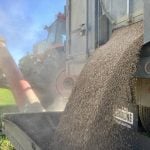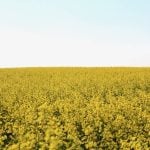Canada’s top crop-growing province looks to lose millions more farm acres to flooding, unless it gets unusually favourable spring conditions, Saskatchewan’s agriculture minister said on Jan. 11.
Last year, farmers left 11.6 million acres unplanted in Western Canada, up nearly one-third from the 10-year average because of excessive spring rain. Almost 80 per cent of the unplanted acres were in Saskatchewan.
Those problems may carry into the spring because of saturated ground before winter and double the normal snowfall in parts of the Prairies.
Read Also

Hail research hopes to benefit potato growers
Alberta research scientist measures hail storm and heat dome affects on potato crops
Ditches and culverts, which drain water from rain and melting snow off fields and roads, are nearly full at a time when they are usually empty, pointing to millions more acres going fallow, said Agriculture Minister Bob Bjornerud, in an interview from Regina.
“We know there’s going to be a problem … unless we get a tremendously exceptional spring,” said Bjornerud, a former farmer. “There’s so much snow here that even if it quits now we’re going to have a pretty good runoff.”
Abnormally dry weather and a gradual spring melt could still drastically change the outlook, the minister said, adding that conditions looked excellent last April before worsening.
Bjornerud said eastern Saskatchewan – especially the northeastern pocket – is especially wet. Those are important areas for growing canola and oats.
Flooding could also make it more expensive to feed cattle for a second year in a row, Bjornerud said.
Heavy flooding is also possible along the Red River that drains into Manitoba from North Dakota.
“It’s fairly inevitable that we’re going to have a lot of moisture on the ground in the eastern portion of the Prairies,” said Trevor Hadwen, agro-climate specialist for Agriculture and Agri-Food Canada.
———
Heavyfloodingisalso possiblealongtheRed Riverthatdrainsinto ManitobafromNorth Dakota.














